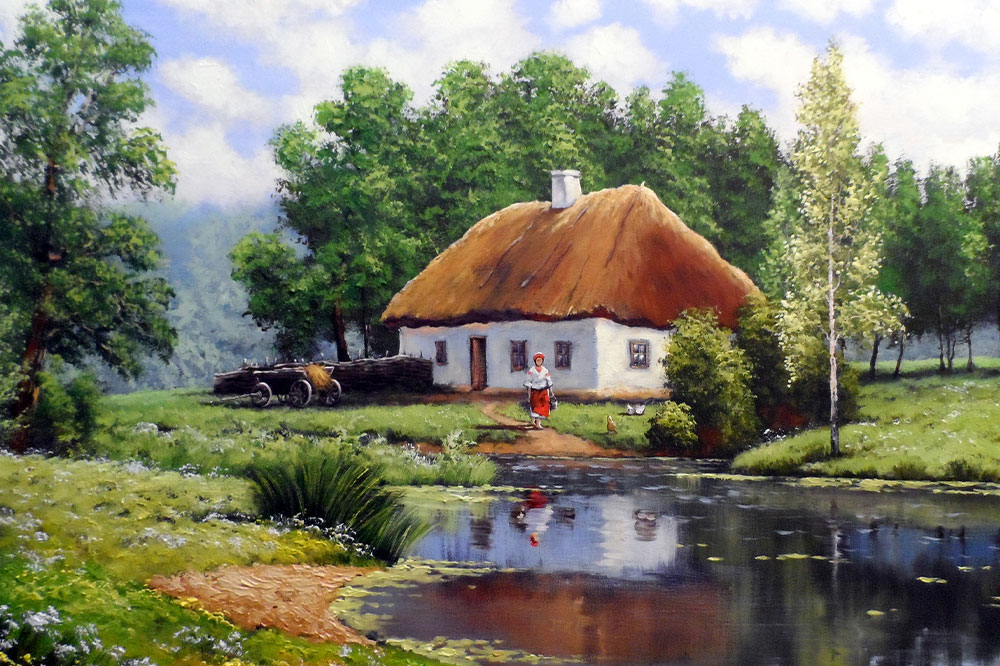6 Tips to Help Identify Original Art Paintings
Buying artwork is a delicate affair. There are hundreds of artists around the globe being commissioned to create unique works of art. Most artists have websites where you can order or commission original art paintings with a particular theme. But if you are eager to buy artwork commissioned by renowned artists, multiple factors help you differentiate original art paintings from fakes. Here are some tips to help you spot the difference.

Read up about the artist
Original artworks are a signature work of the artist’s vision and creation. So, there are several telltale signs to identify the work of a true artist. It’s also one of the best ways to be sure that the painting you buy is authentic. For example, a renowned artist will have a set pattern, masterstrokes, and color palette combinations evident in every original artwork. Signature styles and use of color will be the mark of an artist that is easily identifiable and verifiable by any expert who collects and distributes art. Reading up on the artist and familiarizing yourself with a few of their signature original art paintings will give you the upper hand in the authentication process.
Check the four W’s
Who made the painting, why was it commissioned, what was the story or motivation behind the work, and most importantly, where was it done? Artworks from a particular era or period may not necessarily be from the country. Imported paintings are one of a kind, so many forgers looking to make a quick buck can duplicate the art. But knowing the history behind a painting makes it easy to verify details that any collector or auctioneer should be familiar with and able to answer your questions. If the details don’t match, then it’s a red flag that you can immediately report to the concerned authorities.
Examine the surface of the paintings carefully
Pay attention to the details of the paintings for subtle nuances to verify the authenticity of these art pieces. Examining the canvas will help you differentiate between an original and a fake because of the quality of the brush strokes. A reproduction of an original painting will be nothing more than a print on canvas, made up of billions of tiny dots that make up the image. You can zoom into the canvas to verify this detail using a magnifying glass or a high-resolution camera.
A painting will also have uneven brush strokes and raised color that is quite distinct to the touch. This is the main difference between the original and a print copy. These days, printers are capable of high-resolution prints that are pretty impossible to spot as fake. So, attention to detail is necessary in every case.
Check the back of the painting
Original artwork may have been commissioned by the artist years, even decades ago. So, other minute markers help you verify the authenticity of the painting. For example, the age and condition of the stretcher used to secure the canvas will be authentic to the commission period. This includes other accessories to secure the painting to the tassel or stand. The materials will belong to the era the painting was first completed. So, you’ll only have to look for wear consistent with the period to the present day to verify its authenticity. Some artists even include a secret signature or leave their mark at the back of the painting. On top of that, there will be several inscriptions that private collectors would have added at the back to indicate ownership. So that’s another verification point to ensure you are buying original paintings for sale.
Buy from verified auction houses
Another way to ensure you don’t overpay for a fake is to go through legitimate and well-known auction houses that deal with priceless pieces of history. Sotheby’s, Christie’s, and Philips rank among the most valuable and highly sought-after platforms for buying and selling artwork. There is a high commission that the auction house will charge from the proceeds. But if you are dealing in expensive works of art, it’s best to go via a reputed source than be taken for a ride by someone who knows how to replicate a perfect fake. Many such scams have been robbing art lovers of their hard-earned or inherited money, ending up with fakes that carry no value.
Know the original paintings for sale
Some works of art are part of history and owned by private collectors, never meaning to be sold. The collection of 10 best paintings in existence, including works of art like ‘Starry Night’ by Van Gogh, ‘Mona Lisa’ by Leonardo Davinci, and ‘Raphael Cartoons’ by Raphael, are works of art that can never get listed for sale anywhere in the world. So, if you do come across such a painting put up for sale, at best, it’s a mass-production copy that’s being sold as a souvenir.